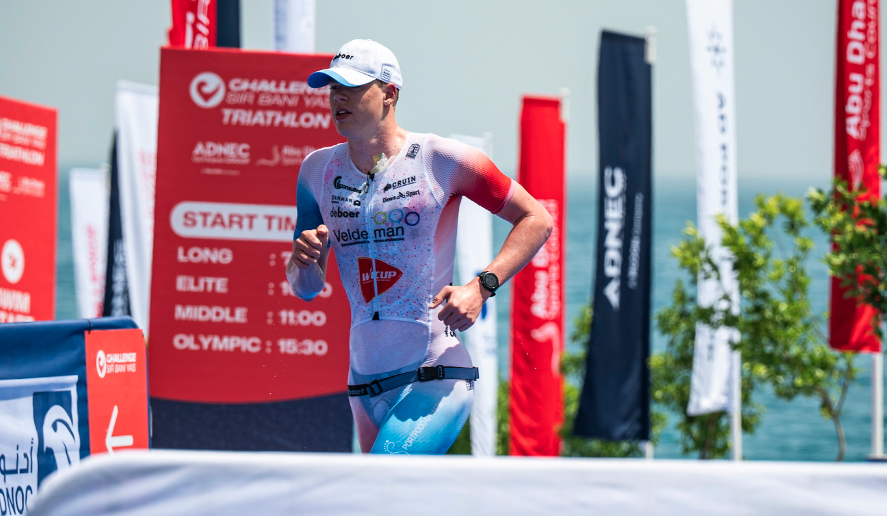This year, Quintana Roo unveiled the all-new Service Course—our fastest-ever UCI-legal aero road bike, designed to compete with the best road racing bikes in the world.
Quintana Roo has been true to the sport of triathlon ever since we invented the world’s first dedicated triathlon bike in 1989. We’re one of the only brands prioritizing triathlon bike performance and innovation, and offering multiple dedicated triathlon bike models. Creating an aero road bike might seem out of character, but that’s not how we see it. If you’ve been paying attention to modern road racing, the sport has changed a lot in recent years. Speeds are increasing and attacks start flying off the front the moment the flag drops. To compete at the highest level, racers are adopting technology and trends pioneered by the sport’s greatest disruptor: Triathlon.
Triathletes and road racers want the same thing: Uncompromising speed. Since Quintana Roo designs and builds the fastest, most technologically advanced triathlon bikes, we knew the modern road bike landscape would be the perfect place to apply our knowledge and experience. The Service Course is ideal for multisport athletes who want to take on technical courses or road racers seeking the speed advantages our triathlon engineers have spent decades perfecting.
The Aerodynamic Edge
For both triathlon bikes and road bikes, aerodynamic efficiency is the key to performance. Triathletes have had a leg up on road racers for years because we aren’t bound by the design rules of cycling’s governing body, the UCI.
With this extra freedom, our engineers can design triathlon bikes with revolutionary aerodynamic features like our Shift downtube and Leading Edge Absent Chainstay. They’ve spent countless hours in the wind tunnel creating and testing the most extreme aerodynamic frame shapes to maximize efficiency without worrying about following the rules that restricted road bike design.
Quintana Roo saw an opportunity when the UCI relaxed its frame design rules for 2021 and beyond. 8:1 tube aspect ratios, reduced minimum tube widths, and compensation triangles are now legal. Bike engineers began scrambling to design bikes around these new parameters, and we’re only just beginning to see the next generation of aero bikes emerge. The Service Course is one of them.
The Service Course uses many of the same drag-reducing tube shapes we pioneered on our class-leading V-PRi triathlon bike, plus a few new design elements specifically designed for the demands of road racing (and to satisfy the new UCI rules). The result is an incredibly efficient aero bike that tests as well or better than the fastest, most progressive competitors on the market. Just like our triathlon bikes, it’s fast at all yaw angles and stable in crosswinds. Quintana Roo has joined the aero vanguard of road cycling and we fit right in because we’ve already been playing in this space for over 35 years.
The Optimized Riding Position
With modern road cycling’s increased focus on aerodynamics, a lot of work has been put into optimizing the least aerodynamic aspect of the bike—the rider. To put themselves in the most aerodynamic position possible, many racers are pushing their riding position further forward over the bottom bracket so they can lower their cockpit. Shorter cranks have also become the latest trend to help riders reduce their hip angle and make it easier to pedal in an aggressive, low position. Does this sound familiar? Triathletes have already been doing this for years!
The world’s first triathlon bike, the Quintana Roo Superform, and every triathlon bike we have made since, is designed to support riders in this aggressively low and forward aerodynamic riding position. The Service Course carries on this tradition with a zero setback seatpost and geometry optimized for riders adopting an aero position on the bike. This makes it easier to sustain an aggressive riding position for longer, increasing your efficiency and average speed.
Not only that, but with customizable cockpit and crank length options, marginal gains chasers can choose narrower handlebars and shorter cranks than most manufacturers will spec. This means you can get a fully optimized bike, right out of the box.
Race-Ready Handling
Quintana Roo’s triathlon bikes are renowned for their handling and the Service Course is no different. It’s designed to feel locked in and stable when riding in an aero position and hammering in a straight line but it doesn’t hesitate to lean into corners or change direction. The goal of the Service Course was to make it feel on edge, without feeling twitchy—i.e., the perfect balance.
These are the same handling qualities we designed into our class-leading V-PR and V-PRi triathlon bikes to make them more confidence-inspiring on technical courses. For the Service Course, this means you can stay pinned during long solo efforts while still having the agility to dice through a road peloton or carve corners on a fast alpine descent.
Competitively Low Weight
Aerodynamic efficiency is the most important thing, but we didn’t want to forget weight. With the V-PR and V-PRi, we made some of the lightest triathlon frames on the market by using premium high-modulus carbon fiber, tailored layups, and precisely engineered wall thicknesses to give athletes an extra edge whenever the road points uphill. The Service Course employs these same gram-shaving techniques. As a result, a top-end race-ready build with deep-section aero wheels will weigh as low as 16.1 lbs/7.3 kg, making the Service Course one of the lightest dedicated aero road bikes available.
Who is the Service Course For?
The Service Course is a bike that will appeal to triathletes AND road racers. For triathletes who feel more comfortable racing on a road bike rather than a dedicated triathlon bike, the Service Course will provide the aero performance needed to compete. For road racers who want to dominate solo breakaways and sprint finishes, the Service Course uses every trick we’ve developed in the no-holds-barred world of triathlon to maximize speed.
It is also a great choice for triathletes competing on technical courses with a lot of climbing, fast descents, or tight corners. The bike course at Challenge Sanremo, for example, features over 4,600 ft/1,400 m of elevation gain. The descents are fast and technical, and the course finishes on the exciting final descent of the famous Milan-Sanremo road race. For many riders, a road bike will feel more comfortable and faster on courses like this.
Finally, while it’s still best to do key sessions on your dedicated race bike, the Service Course can be the perfect training partner for triathletes logging a lot of miles on the bike. It will make it easy to rack up base miles, join group rides, and even dip your toes in some road racing if you want to mix things up.
Whether the Service Course is for you or not, having more options is always a good thing, which is why it’s such a valuable addition to the Quintana Roo line-up. No matter what you use it for, the Service Course will help any athlete ride faster and have fun doing it.
Note: the one-piece integrated handlebar and stem options offered on the Service Course are NOT compatible with clip-on extensions. If you wish to use clip-ons with the Service Course, please consult with our support team for guidance.



